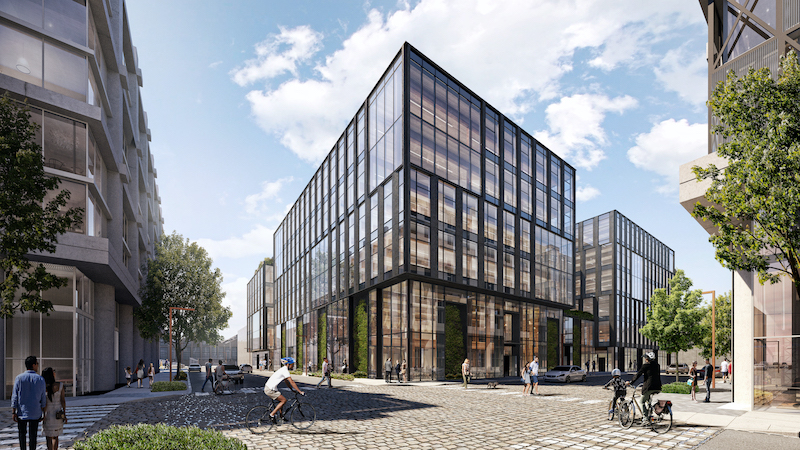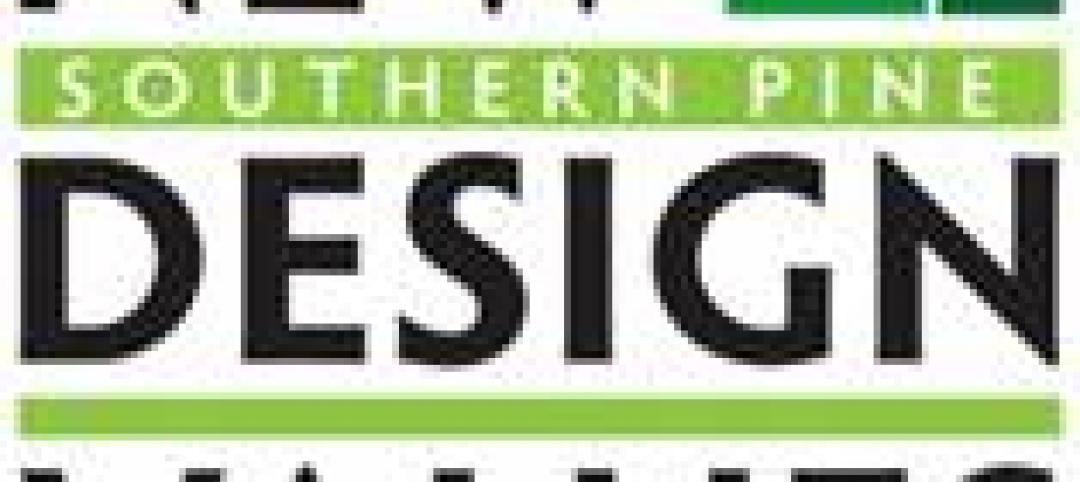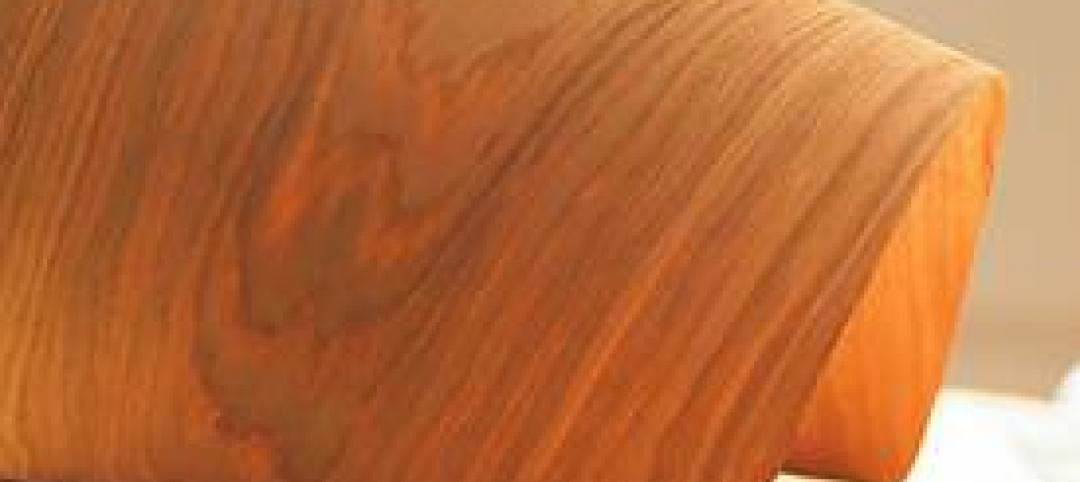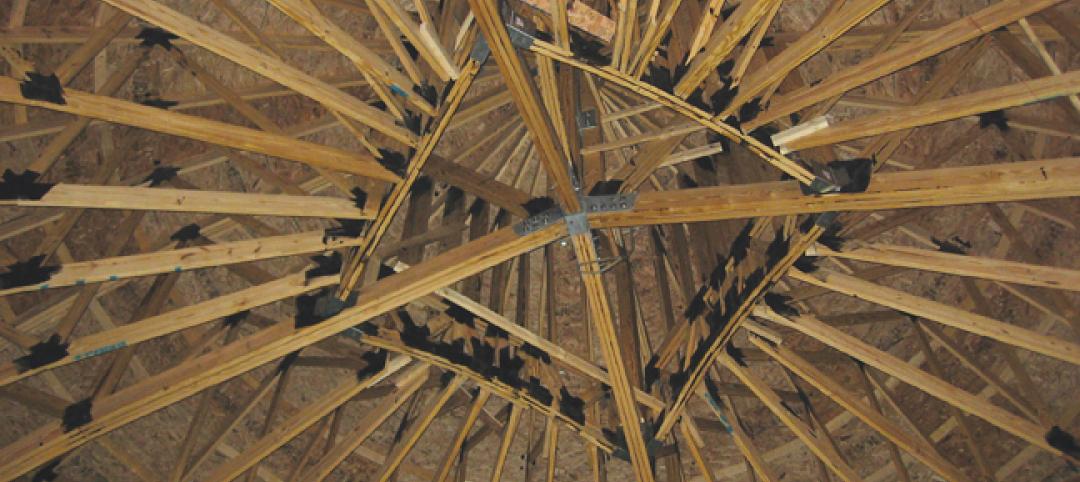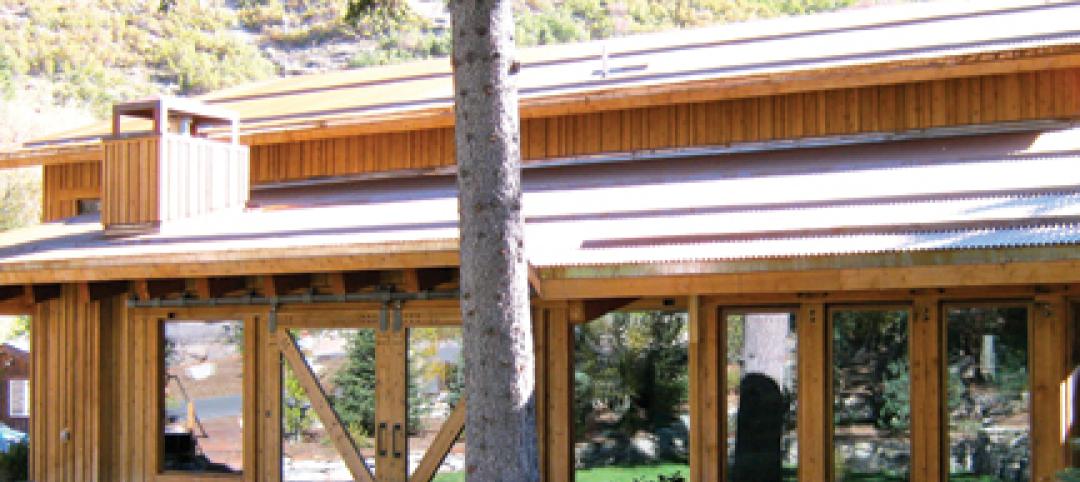The race for the biggest, tallest, boldest mass timber building is officially on.
The developer Brookfield Properties disclosed yesterday its intention to build a 310,000-sf, 85-ft-tall office building in San Francisco that will feature cross laminated timber floor slabs and glue-laminated timber columns and beams.
The project—known as Pier 70 Parcel A—will be part of Brookfield’s 28-acre $3.5 billion Pier 70 waterfront development. With this project—whose construction is scheduled to begin next spring—Brookfield lays claim to the largest office building made from mass timber in North America.
The project is subject to design approvals by the city and the Port of San Francisco. The design architect on this project is Hacker Architects, and the GC is Swinerton. The CLT and glulam components will be assembled with steel lateral seismic framing, and clad with metal panels finished to appear as raw weathered steel.
The six-story building’s interior will feature one- and two-story ceiling heights, and windows that range from 14 to 28 ft high. A cantilevered section will extend on four sides, with each corner used as a switching point for the direction of the beams.
Brookfield estimates that, by using mass timber, it will cut the building’s construction time by four to six months, compared to a similar sized concrete building. (Construction is scheduled for completion in the spring of 2022.)
See also: The University of Arkansas is now home to America’s largest mass timber building
Brookfield and Hacker point to other benefits from building with mass timber: its lower carbon footprint, its contribution to the building’s biophilic design, and its fire resistance compared to steel.
“The experience of a wood building is one of softness, depth, and light that makes it feel more expansion beyond its boundary,” said Corey Martin, a Principal with Hacker, in a prepared statement. “This building will have views through the structure to showcase the wood, the Bay, and pedestrian activity.” (Brookfield intends to include a retailer, restaurant, and bike lounge at the ground floor.)
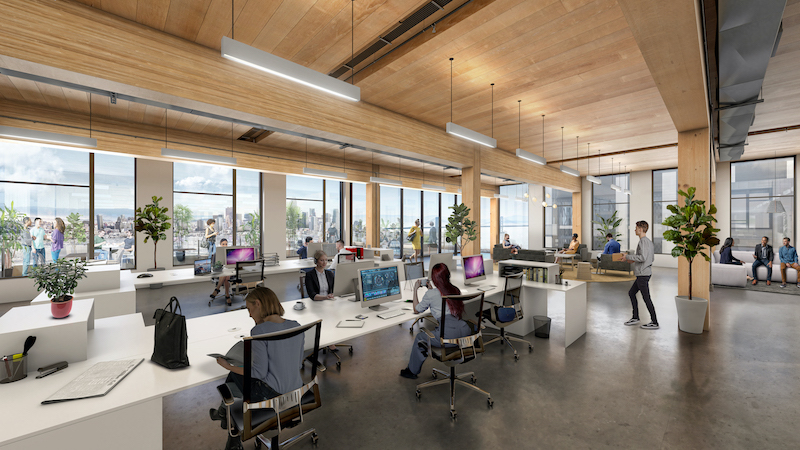
Aside from its lower carbon footprint, mass timber's aesthetic qualities are appealing to designers.
Pier 70 won’t be the first mass timber building in San Francisco, however. That honor will go to 1 De Haro, an four-story 60-ft-high office building developed by SKS Partners and designed by Perkins and Will. “Basically, it’s a very sophisticated Lincoln Logs set,” John Fisher, SKS Partners’ project manager, told the San Francisco Chronicle. “That’s how we explained it to our investors.” California College of the Arts is expected to break ground next spring on three pavilions made from mass timber on a concrete base.
California, which included mass timber in its building code in 2016, is playing catchup with other states—mostly in the Pacific Northwest—where mass timber has gained acceptance. Suppliers are responding to this demand, with three—Katerra, Vaagen Timbers, and SmartLam (through an acquisition)—having brought factories online this year that doubled the mass timber production capacity in the U.S., says Erica Spiritos, Swinerton Mass Timber’s preconstruction manager.
In October SmartLam—which now operates factories in Montana and Alabama—announced that it was planning to open CLT manufacturing facilities in ”major wood baskets” across North America. It will open three of these factories by 2022, which would increase the company’s overall annual production capacity to more than 17.2 million cubic feet.
British Columbia-based Structurlam, the leading supplier of mass timber in North America, on Dec. 9 announced that it would spend $90 million to open its first U.S. manufacturing plant, in Conway, Ark. Walmart, which has invested in Structurlam, will use 1.1 million cubic ft of mass timber—produced from Arkansas-grown trees—in the construction of its new Home Office campus. Structurlam's Conway plant—a retrofit of an old steel plant—is scheduled to open in mid 2021.
Another potential game changer could be the 2021 International Building Code that will include Tall Mass Timber provisions which allow the use of mass timber for buildings as high as 18 stories. Several tall-mass-timber projects have already been proposed in the U.S. in anticipation of the code provisions.
Related Stories
| Oct 20, 2011
Process leads to new design values for southern pine and other visually graded dimension lumber
A summary of the process used to develop new design values will clarify many of the questions received by the SFPA.
| Oct 6, 2011
GREENBUILD 2011: Growing green building market supports 661,000 green jobs in the U.S.
Green jobs are already an important part of the construction labor workforce, and signs are that they will become industry standard.
| Oct 4, 2011
GREENBUILD 2011: Ready-to-use wood primer unveiled
Maintains strong UV protection, clarity even with application of lighter, natural wood tones.
| Sep 29, 2011
CEU series examines environmental footprint and performance properties of wood, concrete, and steel
Each course qualifies for one AIA/CES HSW/SD Learning Unit or One GBCI CE Hour.
| Aug 31, 2011
Wythe Confectionary renovation in Brooklyn completed
Renovation retains architectural heritage while reflecting a modern urban lifestyle.
| May 18, 2011
8 Tips for Designing Wood Trusses
Successful metal-plate-connected wood truss projects require careful attention to detail from Building Team members.
| Jan 21, 2011
Sustainable history center exhibits Fort Ticonderoga’s storied past
Fort Ticonderoga, in Ticonderoga, N.Y., along Lake Champlain, dates to 1755 and was the site of battles in the French and Indian War and the American Revolution. The new $20.8 million, 15,000-sf Deborah Clarke Mars Education Center pays homage to the French magasin du Roi (the King’s warehouse) at the fort.
| Jan 21, 2011
Music festival’s new home showcases scenic setting
Epstein Joslin Architects, Cambridge, Mass., designed the Shalin Liu Performance Center in Rockport, Mass., to showcase the Rockport Chamber Music Festival, as well at the site’s ocean views.
| Dec 17, 2010
5 Tips on Building with SIPs
Structural insulated panels are gaining the attention of Building Teams interested in achieving high-performance building envelopes in commercial, industrial, and institutional projects.
| Dec 7, 2010
USGBC: Wood-certification benchmarks fail to pass
The proposed Forest Certification Benchmark to determine when wood-certification groups would have their certification qualify for points in the LEED rating systemdid not pass the USGBC member ballot. As a result, the Certified Wood credit in LEED will remain as it is currently written. To date, only wood certified by the Forest Stewardship Council qualifies for a point in the LEED, while other organizations, such as the Sustainable Forestry Initiative, the Canadian Standards Association, and the American Tree Farm System, are excluded.


